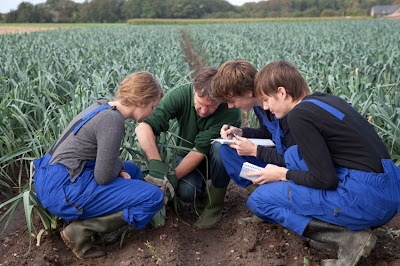Monsanto’s Roundup is an herbicide that has been regularly used since the 1970s to prevent growth of weeds on farmland. While its initial use helped many farmers meet demand and keep a steady supply of crops free from weed growth, weeds have developed a resistance to the herbicide and Roundup’s lasting effect on soil is taking its toll.
According to MotherJones.com, resilient weeds and their evolving resistance to Roundup has forced farmers to resort to what has been deemed a “high toxic pesticide cocktail.” Plants need micronutrients within the soil like iron, calcium, and zinc to grow strong and fend off diseases.
One might wonder how they can do their part to avoid the harmful effects of Roundup and improve soil health in their homes, community gardens, and more. Remaining vigilant about where your food comes from, encouraging natural microbial growth through Bokashi composting, and resorting to natural ways of weed control are some great ways to take proactive action against Roundup. Catalyst Magazine recommends using home remedies such as white vinegar, rubbing alcohol, boiling water, or essential oils like tea tree, citronella, or clove to safely and effectively combat your weed problems at home.
Sources:
http://www.motherjones.com/tom-philpott/2011/08/monsantos-roundup-herbicide-soil-damage
http://www.greenmedinfo.com/blog/un-earthed-monsantos-glyphosate-destroying-soil
http://www.catalystmagazine.net/component/k2/item/1906-roundup-unready
According to MotherJones.com, resilient weeds and their evolving resistance to Roundup has forced farmers to resort to what has been deemed a “high toxic pesticide cocktail.” Plants need micronutrients within the soil like iron, calcium, and zinc to grow strong and fend off diseases.
- Roundup binds to these micronutrients and thus makes them unavailable to plants.
- In turn, the soil is filled with higher volumes of oxides that plants can’t use to grow, and they become more susceptible to disease through a damaged root structure.
- Depending on the soil where Roundup is used, the chemical could degrade in a matter of days or a matter of years.
One might wonder how they can do their part to avoid the harmful effects of Roundup and improve soil health in their homes, community gardens, and more. Remaining vigilant about where your food comes from, encouraging natural microbial growth through Bokashi composting, and resorting to natural ways of weed control are some great ways to take proactive action against Roundup. Catalyst Magazine recommends using home remedies such as white vinegar, rubbing alcohol, boiling water, or essential oils like tea tree, citronella, or clove to safely and effectively combat your weed problems at home.
Sources:
http://www.motherjones.com/tom-philpott/2011/08/monsantos-roundup-herbicide-soil-damage
http://www.greenmedinfo.com/blog/un-earthed-monsantos-glyphosate-destroying-soil
http://www.catalystmagazine.net/component/k2/item/1906-roundup-unready







